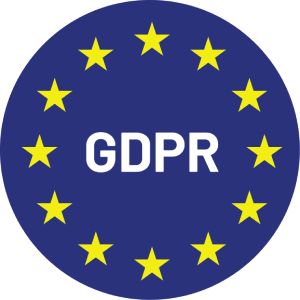Zero-party data has entered the scene as a unique contributor to customer profiling, segmentation, and personalization. It differs from first, second, and third-party data solutions in beneficial ways. Use this guide to discover this new element and implement it in your business for better brand reach and building.
What is zero-party data?
At its highest level, zero-party data is personal information a customer willingly shares with a brand, with a clear understanding of how that information will be used. Zero-party data is successful because it captures customer preferences that would otherwise be nearly impossible to receive.
There are two key reasons zero-party data is so valuable:
1) It captures customer preferences that would otherwise be nearly impossible to gather.
2) Data is voluntarily shared and freely given to the brand and is gathered with customer privacy in mind.
For example, a customer’s browsing habits won’t necessarily reveal how they want to interact with a brand; it will only reveal which avenue they’re using due to its availability. Data collected is only valuable once activated. Zero-party data earned by a brand should be used immediately for customer profiling, segmentation, and personalization.
If a customer shares their preference for sustainable products, their product recommendations should be altered to reflect this preference. By activating valuable zero-party data, brands can drive more revenue, increase brand loyalty, and build consumer trust.
Zero-party data collection should follow these three principles:
- Be well-timed: A customer should be met with a relevant moment. For example, if they’re struggling to understand new software, they should be given guidance and resources to help them learn. This becomes a moment they remember as significant and helpful.
- Be value-driven: The customer should feel they’ve earned something valuable from the brand, such as a discount for first-time purchasers. As opposed to the history of brand management, exchanging value should be a priority for the customer, not the brand.
- Be user-friendly: Present the customer with microexperiences. Use low-friction methods of gathering customer preferences, such as offering a discount for their opinions on the available products.
Types of zero-party data a brand can collect includes: email and SMS opt-ins, buyer personas, purchase intent, product affinities, values, needs, interests, and communication preferences.
Information gathered will tell the brand how to more successfully interact with their customers and provide them with unique-to-them campaigning material to help them through the sales funnel.
Zero-party data versus other data collection methods
First, second, and third-party data tend to use sneakier ways of gathering and trading data, and they’re harder to leverage nowadays as customers value their privacy more. These methods track how the customer interacts with the brand in ways that don’t accurately capture customer preferences.
On the other hand, zero-party data ensures the data collected from customers is accurate because of their choice in the equation, the relevant microexperiences, and the value they’ll gain from participating. First-party data is acquired through analytics, but zero-party data comes straight from the source: the customer. For optimal results, first-party data should be used in concert with zero-party data to acquire both customer analytics and preferences.
How to collect zero-party data
It’s all about earning it; that’s what builds trust and loyalty. First, second, and third-party data collect data without proactively asking the customer, and the customer may or may not be aware of it. Zero-party data companies put emphasis on creating a connection with the customer directly.
Earning data for the brand has to look like value to the customer. Value is provided in the following ways:
- Financial offers, such as discounts, sales, and samples
- Product recommendations that align with the needs of the customer
- Exclusive access to loyalty programs, memberships, perks, and preference centers
- Additional information through insights, industry experts, content, reviews, and testimonials
For example, if the goal is to drive purchases, the microexperience could be a product finder quiz, and the provided value to the customer would be personalized product recommendations.
Customer profiling and segmentation
Zero-party data emphasizes customer preferences. It’s this information that will help a brand grow in every direction by catering to what each customer wants. Profiling and customer segmentation are a result of acquiring customer preferences. We discuss the benefits to the brand below.
Create accurate customer profiling/profiles
Capturing accurate data straight from the customer provides brands with the information they need to build relevant customer profiles and personas. Many businesses will use a customer relationship management system to track their customers and provide them with relevant touch points and recommendations. This is only valuable to the customer if the interactions are based on accurate customer preferences.
Personalize marketing channels
Whether the approach is through email, an app profile, social media, or in-person, customer preferences help personalize the marketing strategies that a customer interacts with. Preferences help with customer segmentation so the same strategy won’t be used across all customers, but rather specific campaigns will be directed toward varying segments for optimal results.
For example, customers interested in spending fifty to 100 dollars on shoes won’t receive the same marketing campaigns as those interested in spending 100 to 150 dollars. Customers have learned to skip over messaging that isn’t relevant to them. Use zero-party data collection to inform marketing materials based on the customer’s preferences.
Inform the content strategy
With customer profiling and segmentation, not everyone should experience the same content, only content that is most relevant to them. Knowing what separates one segment from another, a brand can inform its content strategy. For example, if a recipe site discovers their largest segment of subscribers want access to vegan recipes, they can start publishing content more directly related to that need. Customer preferences can also highlight missing content or expectations that a brand can take advantage of.
Personalizing the customer experience
Collecting zero-party data through surveys tells businesses valuable information about how their customers want to experience the brand. Perhaps a survey for a home improvement company will reveal that customers prefer to watch short video tutorials rather than read articles about DIY projects. The brand could then highlight tutorials videos prominently on their home page to improve engagement and time on site.
Lower the cost of customer acquisition
Segmentation will include a collection of customers that have interacted with the brand but need another touchpoint or two to interact with again. This is where retargeting ads come in, saving the company money by targeting special campaigns toward people most likely to respond to that product or service.
Create brand loyalty and retention
Building on retargeting campaigns, data profiling builds loyalty with customers to entice them to become repeat customers or members. When they’re consistently offered relevant information, value, and microexperiences, they’re much more likely to feel the brand listens to them, and want to support it.
Personalize product discovery
One of the most noticeable changes to the customer after having offered preferences is their product recommendations and discovery experience. Based on their preferences, they should quickly see a shift in the products recommended to them as well as how they can find them. If they mentioned they’re looking for natural skin-care products and they’re often on the go, similar products should be displayed to them on their phone.
Optimize inventory management and forecasting
The overall information accumulated through zero-party data collection will help brands manage their inventory and foresee changes and trends. For example, a brand that sells personalized office materials might have a segment that’s largely students. That segment will likely be most active before their semester begins and the brand can prepare accordingly, stocking up on the most popular products.
Zero-party data strategies
Apply the following four rules of zero-party data collection to the strategies below: Only collect data that will be used; earn the data by providing value to the customer; use the data as soon as possible to show the customer how it was used; and put the customer in charge of their data with preference management options.
1. Define the brand’s zero-party data priorities
Not every brand will find the same customer preferences valuable to their products or services. Consider asking for data attributes that will help your brand determine buyer persona, product interests, or communication preferences.
2. Use existing resources
Many brands have existing experiences during their customer journey that can be used to capture zero-party data, such as a product finder quiz or post-purchase survey. Figure out how those existing resources could be optimized to capture preference data and return immediate value to the customer.
3. Add new zero-party data collection streams
Consider other touchpoints during your customer journey to gather data and reward customers with things like a spin-to-win that delivers coupon codes, or a single question pop-up when someone first arrives at your home page. Pair each experience with something valuable and act on the new data immediately.
Wyng: Customer-first data collection and personalization
Wyng makes it easy to collect and activate zero-party data. If you want to improve your customer profiling and segmentation, Wyng has the tools and guidance necessary to drive more relevance at scale. Contact us today for a demo.






